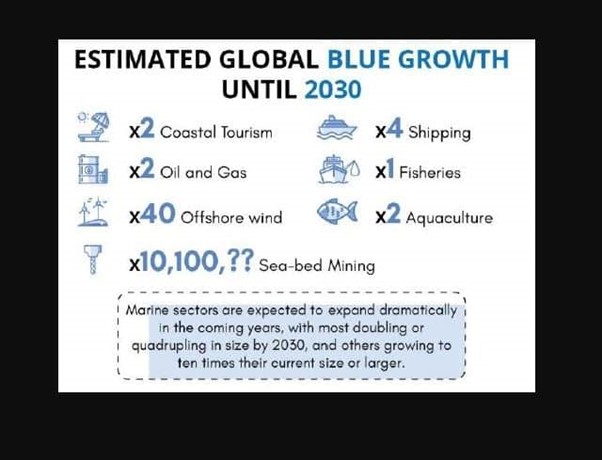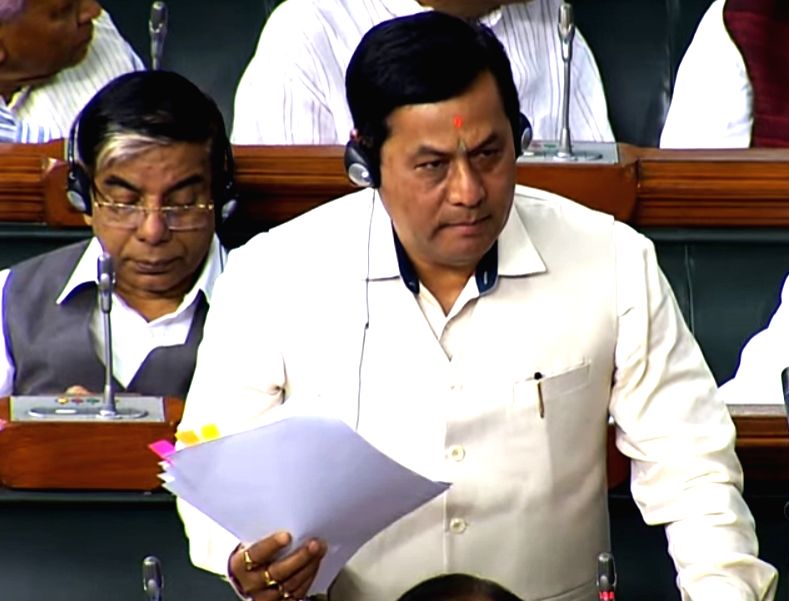Sustainable Blue Economy: Needs serious thought and implementation.
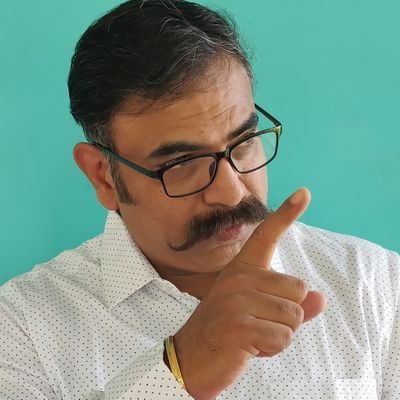
Interview with Capt Gajanan Karanjikar, discussing about Sustainable Blue Economy
- Blue Economy Activist and Strategist for Corporate sector
- G20- WG – consultant – Blue Economy
- President AIMPA
- CMMI- Warden
Capt Gajanan Karanjikar has been writing articles on Blue Economy and has recently completed a century of such articles. The opportunity came out when he spoke extensively on sustainable Blue Economy. Since India’s Economic advisory council has drafted out a Blue economy policy and is open for suggestion in Public domain, Capt Gajanan was interviewed to understand more of the Sustainable Blue economy and its application.
Q: what is meant by sustainable Blue Economy:
GK: Ocean provides a huge opportunity for Business as well as greater prospects ahead for Human engagement with its various elements. 95% of the ocean is yet to be known to Human in terms of Life and resources under Ocean. Although late in time but India has gathered its way to carve the path into the Blue Economy, thanks to the country’s leadership Honorable Prime Minister Narendra Modi for same. Prime Minister Narendra Modi’s speech in Mauritius in 2015, which presented the doctrine of “Security and Growth for All in the Region” (SAGAR), triggered a series of discussions and studies in the non-government sector.
 Commonwealth defined the Sustainability in Blue Economy very well. It says “The ‘blue economy’ is an emerging concept that encourages sustainable exploitation, innovation and stewardship of our ocean and its life-giving ‘blue’ resources.” The world banks stresses on "sustainable use of ocean resources for economic growth, improved livelihoods, and jobs while preserving the health of ocean ecosystem.” In the old ‘business-as-usual’ model, nations develop their ocean economies through the exploitation of maritime and marine resources – for example, through shipping, commercial fishing, and oil, gas, and mineral development. Often, they don’t pay adequate attention to the effect of these activities on the future health or productivity of the same resources and the ocean ecosystems in which they exist. The ‘blue economy’ concept provides a more holistic vision that embraces economic growth – when it is sustainable and does not damage other sectors. Similar to the ‘green economy’, the blue economy brings human well-being, social equity and environmental sustainability into harmony.
Commonwealth defined the Sustainability in Blue Economy very well. It says “The ‘blue economy’ is an emerging concept that encourages sustainable exploitation, innovation and stewardship of our ocean and its life-giving ‘blue’ resources.” The world banks stresses on "sustainable use of ocean resources for economic growth, improved livelihoods, and jobs while preserving the health of ocean ecosystem.” In the old ‘business-as-usual’ model, nations develop their ocean economies through the exploitation of maritime and marine resources – for example, through shipping, commercial fishing, and oil, gas, and mineral development. Often, they don’t pay adequate attention to the effect of these activities on the future health or productivity of the same resources and the ocean ecosystems in which they exist. The ‘blue economy’ concept provides a more holistic vision that embraces economic growth – when it is sustainable and does not damage other sectors. Similar to the ‘green economy’, the blue economy brings human well-being, social equity and environmental sustainability into harmony.
As per UN “A blue economy prioritizes all three pillars of sustainability: environmental, economic, and social. When talking about sustainable development, it is important to understand the difference between a blue economy and an ocean economy. The term implies that the initiative is environmentally sustainable, inclusive and climate resilient.”
Impact of Human actions are needed to be measured and known for the impact on the environment as a whole. Blue economy projects are needed to protect and develop more intangible ‘blue’ resources such as traditional ways of life, carbon sequestration and coastal resilience in order to help vulnerable states mitigate the devastating effects of poverty and climate change.
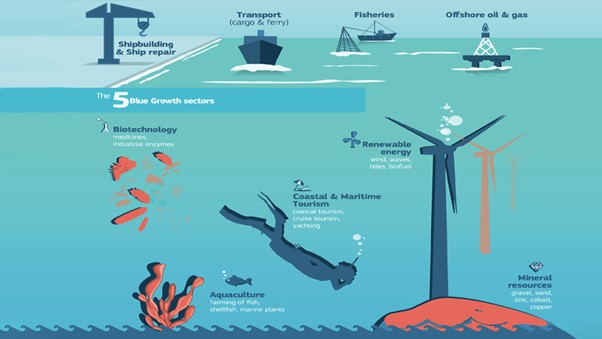
Q: It is such a new term as it sounds, Blue economy is unknown to many, let alone the sustainability measures in that. For our readers can you explain what are the components of Blue Economy?
GK: Blue economy components are wide spread not only into ocean but also in land-based water bodies like Rivers, lakes, ponds, dams and waterways thus artificially made like canals and Farm lakes.
Under the blue economy we are looking at following activities:
- Harvest of living resources.
- Extraction of non-living resources.
- Commerce and trade in and around ocean and seas including inland waterways.
- Resource to Ocean health challenges.
Additional growth of the blue economy is possible in a number of areas, especially: fisheries, aquaculture, mariculture, coastal tourism, marine biotechnology, and ocean energy. While some of these sectors will require little encouragement and additional governance, others need more and better planning to achieve their full potential and return more sustainable outcomes.
Q: How is the world reacting to the sustainable blue economy?
GK: The sustainability Week Asia conference being held in Marina Bay sands in February 2023, Singapore has denounced that, Countries and business leaders perceive economic, social and environmental sustainability as a mainstream method for creating new business opportunities and a better future. As the world’s economic situation changes, it is critical to ensure that boards, wider corporate teams and stakeholders are focused on practical action.
Governments need to engage at the intersection of business, government and civil society, independent bodies need to work at macro-level analysis and case studies, and connect them with actionable insights and practical examples to help your projects sustainable, faster.
On blue economy front Calling for the implementation of the promises set out in the SIDS Accelerated Modalities of Action, known by the shorthand SAMOA Pathway and the ambitions of Sustainable Development Goal 14 (SDG14), on conservation and sustainable use of the oceans, world leaders are reiterating the importance of harnessing private sector collaboration to make it possible.
Q: Can you elaborate more on SGD14 and its importance for Sustainable Blue economy?
GK: Saving our ocean must remain a priority. Marine biodiversity is critical to the health of people and our planet. Marine protected areas need to be effectively managed and well-resourced and regulations need to be put in place to reduce overfishing, marine pollution and ocean acidification. SDG (sustainable Development Goal) 14 is about Life Below water. The first time the UN spoke about Life under water. Earlier version of the Millennial development goals published on 2000 had no mention of Oceans and life held by them. SDG 14 is titled at Conserve and sustainably use the oceans, seas and marine resources for sustainable development.
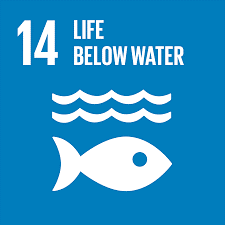
SDG 14 targets seek to prevent and reduce marine pollution; further the sustainable management and protection of marine and coastal ecosystems; address the impacts of ocean acidification; regulate harvesting and end overfishing, illegal, unreported and unregulated fishing and destructive fishing practices; conserve coastal and marine areas; increase the economic benefits to small island developing States and least developed countries from the sustainable use of marine resources; and strengthen the means of implementation, including increasing scientific knowledge, the transfer of marine technology and implementation of international law as reflected in the 1982 United Nations Convention on the Law of the Sea (UNCLOS).
Q: why does the Life below water matter?
GK: The ocean drives global systems that make the Earth habitable for humankind. Our rainwater, drinking water, weather, climate, coastlines, much of our food, and even the oxygen in the air we breathe, are all ultimately provided and regulated by the sea. Careful management of this essential global resource is a key feature of a sustainable future. However, at the current time, there is a continuous deterioration of coastal waters owing to pollution, and ocean acidification is having an adversarial effect on the functioning of ecosystems and biodiversity. This is also negatively impacting small scale fisheries.
Marine debris threaten biodiversity through entanglement or ingestion by organisms. Coastal waters are deteriorating due to nutrient loading and following eutrophication – a phenomenon expected to affect 20% of large marine ecosystems by 2050. Important habitats are under pressure and as an example, about 20% of the world’s coral reefs have today been destroyed and nearly 50% of remaining reefs are under imminent risk of collapse through human pressures.
Following facts will explain this more:
- Over THREE BILLION PEOPLE depend on MARINE AND COASTAL BIODIVERSITY for their livelihoods. POLLUTION THREATHENS the world’s largest source of protein.
- 40% OF WORLD’S OCEANS suffer from OVERFISHING, POOR FISHING PRACTICES and POOR WASTE MANAGEMENT.
- The ocean absorbs around 23 per cent of annual CO2 emissions generated by human activity and helps mitigate the impacts of climate change.
- The ocean has also absorbed more than 90% of the excess heat in the climate system.
- Every year, an estimated 5 to 12 million metric tonnes of plastic enters the ocean, costing roughly $13 billion per year – including clean-up costs and financial losses in fisheries and other industries.
- About 80% of all tourism takes place in coastal areas. The ocean-related tourism industry grows an estimated US$ 134 billion per year.
- Marine fisheries provide 57 million jobs globally and provide the primary source of protein to over 50% of the population in least developed countries.
- 35 percent of global fish stocks are overfished, a dramatic rise over the 10 percent levels of the 1990’s.
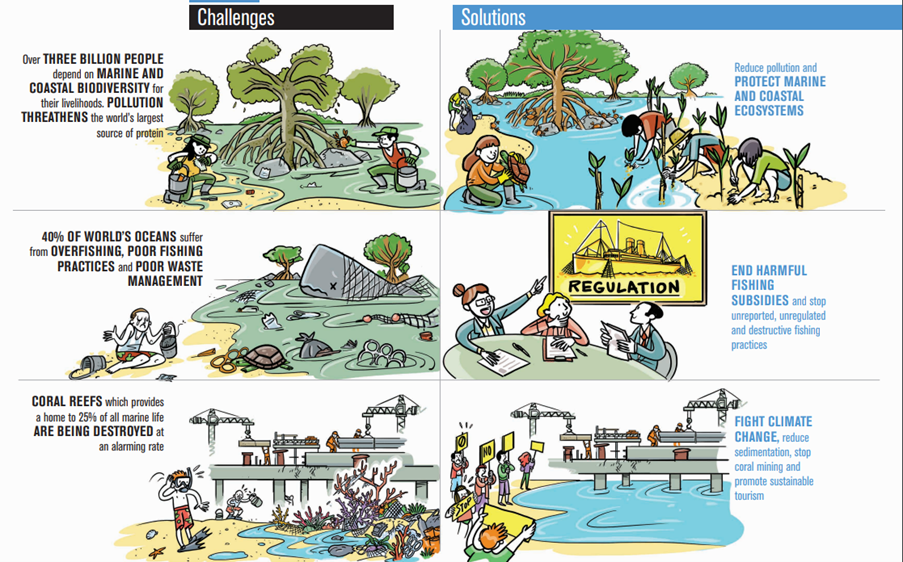
(pic courtesy - UN)
Q: how is Human actions impact Sustainability?
GK: Number of human actions are impacting ocean and water bodies’ health. Be it surface transport, fishing, Farming and land-based pollution by Industrial areas impact oceans beyond repair. Overfishing: Destructive fishing, such as bottom trawling, can damage seafloor ecosystems and indiscriminately catch everything it encounters. Shipping: Intensive shipping damages marine environments through the release of chemicals, transfer of invasive species, dumping of waste, and physical disturbances. Cumulative: With nearly 98 percent of global oceans affected by multiple stressors, hotspots of cumulative impact include the North Sea and the South and East China Seas.
Q: So do you see this as challenges to Blue economy? In your opinion what are the challenges to Blue economy?
GK: The challenges to Blue economy are only in will power and administrations’ engagement. However overfishing, shipping and cumulative impact of human actions do have considerable effect on Ocean health and thus on the Blue economy. The potential to grow the blue economy is limited by a series of challenges. For much of human history, aquatic ecosystems have been viewed and treated as limitless resources and largely cost-free repositories of waste. These resources, however, are far from limitless and we are increasingly seeing the impacts of this approach.
Despite a range of actors and large investments, current attempts to overcome these challenges have mostly been piecemeal, with no comprehensive strategy (for example fisheries governance; improving ports; marine litter efforts). Even when one sectoral policy achieves some success, these results are often undermined by externalities from activities in another sector. Often, for example, coastal zone management efforts, or support to coastal fishers, are undermined by unbridled sand mining, ill-sited ports or aquaculture farms or unregulated tourism development. In coastal zones, declines in mangrove forest habitat resulting from wood harvest, sea level rise, and changes in sediment and pollutant loading from river basins combined with land reclamation for agriculture or infrastructure negatively impact fisheries by reducing or degrading spawning and feeding habitats. Loss of mangrove forests, for example, threatens profits from seafood harvests exceeding US$4 billion per year.
Q: how can we overcome these challenges??
GK: Overcoming these challenges is not easy, yet not difficult if systemic approach is taken. Good news is that Govt has already started working on this. A more systematic approach, based on a better understanding of nationally defined priorities, social context and resource base, can guide sustainable and inclusive blue growth. Government has increasingly recognized that they need more knowledge about the biophysical characteristics, carrying capacity, synergies or trade-offs between sectors to ensure an efficient and sustainable management of different activities. One of such measures of writing a blue economy Draft policy.
Marine and coastal spatial planning and integrated maritime surveillance are needed to give authorities, businesses and communities a better picture of what is happening in this unique space. Digital mapping of maritime and coastal space and natural assets can form the basis for cross-sector analysis and planning in order to prevent conflicts and avoid externalities. Similarly, the growing science of data-limited stock assessments can provide critical information needed for improved fisheries management. In places such as South Africa and Indonesia, mobile technology is being tested to gather previously unavailable data, for example on fishery landings and fish stock health.
I have been advocating coastal zone management to make use of Marine Spatial planning to the fullest in order to understand more about the Blue Economy and its sustainability measures. Recently while meeting key people, I have tossed an Idea of Maritime Economic zone which could be a part of Marine Protected areas where we can look at concentrated measures on Blue economy projects. Involvement of people in and around coast in very important to get and more over the Maritime Professionals, who themselves are seen ignorant of the Blue Economy. This disheartens me.
Q: where do we, India heading into Blue Economy? Are there any efforts put in?? what does India need to do??
GK: Investing in improved governance will create a pipeline of investable opportunities to grow the blue economy in a way that benefits national economies and local communities, while protecting resources for future growth. Effective governance is an essential condition to promote sustainable management of aquatic resources and environment, and ensuring biodiversity and ecosystem resilience, which in turn contribute to building community resilience against various shocks, including climate change. Effective governance will also help create an enabling environment for responsible private sector investments throughout the value chain by reducing risks and providing incentives for innovation.
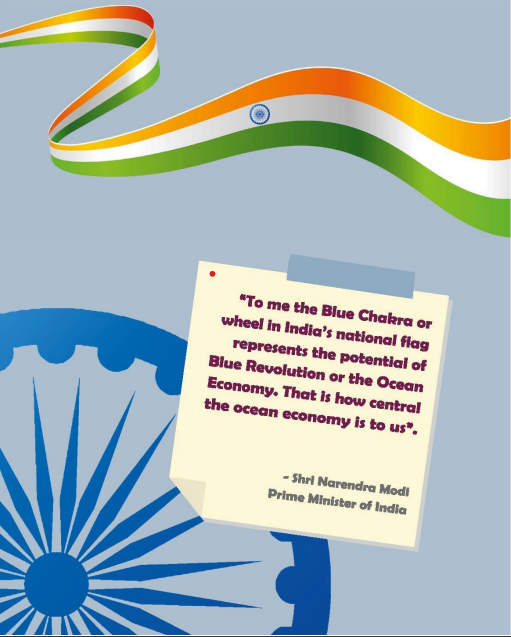
After Hon Prime Minister spoken about the Blue Economy in 2015, Indian Government departments have started moving. Although a slow pace due to complexities of understanding the Blue economy, we must credit the Economic advisory council which came out with the Draft Policy on Blue Economy in Sept 2020. Everything is this country is Prime Minister driven. Probably he will now have to ask the implementation of the policy and then we would have some head start.
Nevertheless, Blue economy Draft policy is all about creating a Policy frame work to know the potential of Blue Economy so essentially it a a policy or a statement to know measure, gauge and fathom the potential and not work on the money earning projects.
Governance enhancements should include a focus on including and empowering local communities. Analysis and results of fisheries rebuilding efforts around the world have demonstrated that when local communities and fishers have a voice in setting policy and management guidelines, these rules are much more likely to be followed and create lasting change.
Q: You mentioned Blue Economy Draft policy and had been part of group giving suggestions, can you elaborate more on Policy document??
GK: The draft Blue Economy policy framework envisages the optimal utilization of all sectors of the maritime domain, (living, non-living resources, tourism, ocean energy, etc.) for sustainable development of coastal areas. This policy document contains key recommendations on National Accounting Framework for Blue Economy and Ocean Governance, Coastal Marine Spatial Planning and Tourism Priority, Marine Fisheries, Aquaculture and Fish Processing. Manufacturing, Emerging Industries, Trade, Technology, Services and Skill Development, Logistics, Infrastructure and Shipping, Coastal and Deep-Sea Mining and Offshore Energy and Security, Strategic Dimensions and International Engagement.
The policy also proposes formation of BEAC, National Blue Economy Advisory Council (BEAC) which will have the Secretaries of relevant Ministries/ Depts. as members. It would also include Chief Secretaries/Principal Secretaries of Coastal States and representatives from industry.
The draft policy document was put out for comments and feedback from general public and all relevant stakeholders. Many valuable comments/ suggestions received from ministries/ departments, parliament members, Non-Governmental Organisations (NGOs), industry representatives and general public have been considered and the policy document has been revised accordingly.
The draft Policy aims to significantly enhance the contribution of the Blue Economy to India’s GDP in the next five years, improve lives of coastal communities, preserve our marine biodiversity and maintain the security of our marine areas and resources. Today, the Blue Economy holds the promise of being the next multiplier of economic growth and well-being, provided that the strategy places sustainability and socio-economic welfare at the centre stage. Therefore, the proposed roadmap for evolving a Blue Economy Policy would be a crucial step towards unlocking the potential of economic growth and welfare.
Q: do you think this Draft Policy is adequate TO KICK START drawings from blue economy into National Grid??
GK: Draft policy is only to measure the potential through a systemic policy framework, improve livelihood of coastal communities. Similarly, it aims to work on the existing Non-Emerging sectors which will add value to National economy. For eg Fisheries, the sector is in deep trouble now and looking at it from a different perspective will definitely give it a boost. Fisheries provide 15% food supplement and 60% protein supplement. Sagarmala will be a key to comprehensive port led coastal development. To promote port-led industrialization, the Govt. has identified 12 major ports and 14 Coastal Employment Zones (CEZs) as part of the National Perspective Plan under the Sagarmala program. Each CEZ comprises Coastal Economic Units (CEUs), with single or multiple industrial clusters where there will be manufacturing units.
A few key points pertaining to the draft policy framework are as follows: First, it defined BE as “an emerging concept comprising the entire eco-system of ocean resources including marine, maritime and the onshore coastal economic sub-systems within India’s legal jurisdiction, which have close linkages with economic growth, environmental sustainability and national security.” Second, it referred to a conservative estimate that BE in India represents “4% of the Gross Domestic Product,” thus putting an official stamp on it. Third, it identified seven priority areas for the BE: The much-needed national accounting framework; coastal marine spatial planning and tourism; fisheries and aquaculture; trade and technology; logistics, infrastructure and shipping; coastal and deep-sea mining and offshore energy; and security, strategic dimensions and international engagements. Fourth, it underlined the significance of BE as one of “the ten core dimensions of growth” in the government’s vision of a New India by 2030. Fifth, in the context of the expanding network of submarine optical fiber cables for ensuring highspeed broadband connectivity, the draft policy advocated recognition by India of “an important, emerging economic and strategic axis called the Seychelles-Singapore-Samoa (SSS) axis,” noting: “This axis should form the basis of a robust Blue Economy Policy for India. Finally, the recommendations and the roadmap contained in the draft policy document aim “to significantly enhance the contribution of the Blue Economy to India’s GDP in the next five years.”
The Blue Revolution should be further expanded by promoting aqua culture, cage culture, seaweed and algae harvesting and sustainable marine capture by adopting an eco-system approach to fisheries management. Extensive use of technology, tele-communication, digital and remote sensing applications would be mainstreamed in all aspects of fisheries and ocean management.
There is more need for maritime professionals to be involved in this. The subjects of Blue Economy sectors (emerging and Non- emerging) should be given out as subjects for PHDs (Thesis) and used widely for industrial application. The blue economy potential in emerging sectors needs to be explored fully as well as in Non-emerging sectors. Non emerging sectors like fishing have several issues , hurdles which need to be removed to make use of the sectors in effective fishing. The fishing community has been demanding reserved space for fish auction and packing hall so as to enable the landed catch to sort out under hygienic conditions and for auction under shelter so as to ensure deterioration of fish. Infrastructure facilities like boat repairing centre, diesel pump, toilets, water supply system, arrangement for supply of ice, market for local sale, cold storage system and other requirements for fishing activity.
India’s Blue Economy Policy reads, India’s drive to promote BE, which may be termed its Blue Diplomacy, has largely been conducted in multilateral fora. The IORA tops the list, given India’s pre-eminent and strategic location in the Indian Ocean Region. The government, academics and business leadership have been actively supporting and shaping the IORA’s programs.
The need for increased financing and enhanced capacity-building is also underscored. Developing countries, in particular small island developing States and least developed countries, face considerable hurdles in the management of maritime spaces due to the lack of resources and capacity. Ocean-related initiatives in many cases suffer from a lack of sufficient or sustainable funding, including for capacity-building. Innovative approaches and the effective use of partnerships could help overcome some of these obstacles.

